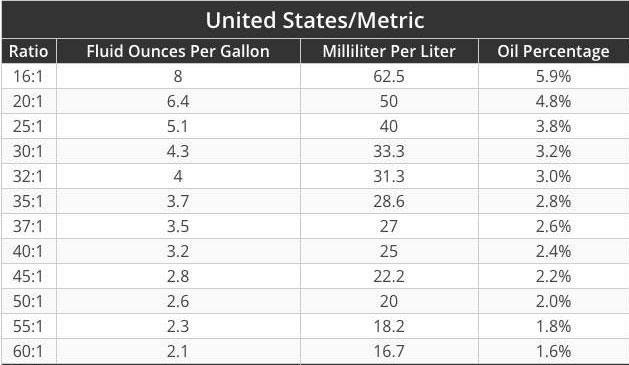
Test your Fuel for Ethanol!
Testing your fuel for Ethanol percent is inexpensive and easy with this great device available from Amazon: Stens 750-760 Alcohol Content Tester - For testing alcohol content in gasoline. Will test for E85 and gas with more than 10% alcohol.
TO USE: Fill with water to the first line. Next, fill remainder of bottle with gasoline. Put on cap and shake to mix. Place bottle on flat surface for 5 minutes. Read results. For testing alcohol content in gasoline. Will test for E85 and gas with more than 10% alcohol. 2" Depth x 2" Width x 4" Height. Be careful - it is made of glass and will break if you drop it!
Fuel Tips from Diego
seems that oil are becoming a big problem for some people.
the most important troubles we have now may depend from the change
on gasoline standard in Europe, can be in other country also.
after the very important experience durying the world champ, we can
suggest to use a simple semi syntetic oil for scooter of any brand
at 2% but there are some "smokeless" type that we prefere.
if you want to use the syntetic oil, the max rate must be 1,7% and
seems that some addittive help a lot to mantein clean the combustion
chamber, 2% of syntetic oil is TOO MUCH.
protection is garantee anycase also with semisyntetic oil, the only
problems on piston can happen because a very lean carburation (dirt
carburator or too high pop up pressure), sometime an exaust leaking
or/and a too advanced ignition timing.
diego
per il volo
Fuel, Oil, and Spark Plug Specifications for the Top80
by Had Robinson
BLEND: Use premium ethanol free gasoline and synthetic oil at a 2% mix (50:1 ratio). If you use ethanol free fuel, your fuel lines, carburetor gaskets and diaphragms will last much longer and you will have far fewer problems with the fuel tank disconnect mechanism. Do not use gasoline that contains more than 5% ethanol as it affects the lubricating properties of the oil. Most service station gasoline has a 10% ethanol mix. AVGAS can be used but you will experience more engine maintenance due to deposits forming in the combustion chamber and, perhaps, more wear of the crankshaft bearings (we have not noticed this, however, in our engines). In a pinch, regular gasoline can be used but it must be less than a week old. Do not use premium gasoline older than 3 weeks as the octane value deteriorates after that period. For more info on fuel check these articles from Ultralight News and ROTAX Service. More and more airports are now carrying ethanol free fuel (MOGAS) if you cannot find it anywhere else. For about $10 you can buy an ethanol percent tester like this one.
Fully synthetic oils available in the U.S.
These have the JASO FD and API TC classification:
Amsoil SABER -- the best value for a fully synthetic oil.
Motul 800 2T Factory Line Off Road
Motorex Cross Power 2-T
Shell Advance Ultra 2
Valvoline 2-Stroke Racing Oil
Castrol RS TTS 2T
SPARK PLUG:
NGK B9ES (cold conditions)
NGK B10ES (hot conditions)
Electrode gap is 0.5mm -0.6 mm. (.020” - .024”) Torque: 20-30 NM (12-22 ft. lbs. Use ½ this torque value if the plug is lubricated (used). Be certain the spark plug is gapped properly. Too great a gap will cause missing at high loads.
Note that poor performance, poor idle, weak top end, etc. are often caused by a worn out spark plug. If you replace your spark plugs every 25 hours, your Miniplane will run the best. The sharp edges on a new spark plug help the intensity and strength of the spark discharge.
More fuel tips can be found HERE on the Southwest Airsports website.
AvGas or PumpGas?
After much discussion and discovery regarding the use of AvGas in the Top 80 engine, we have come to the opinion that Avgas is simply not the ideal fuel for this motor. Here are some expert's opinions regarding the issue:
I started flying a Cessna172 at the age of 15. Yes it's great stuff for larger motors as I stated in a few posts, I burn it in my MZ 34. You say you have used it in everything? I'm only talking about it not being a good idea in the Top 80 as I have had enough pistons in my hand with a stuck or partially stuck ring to say No to Avgas in the 80.
Most people don't even know that the ring is stuck! Others say they use Avgas but they sell the motors around 50 or 60 hours, the one that came in today had only 50 hours on it the ring was stuck! I have yet to talk with anyone with a Top 80 that has used Avgas long term without issues.
Lance Marczak
I agree with Lance. AVGAS is simply not suitable for the Top80 or any small cc, high revving 2-stroke engine. AVGAS is engineered for old style aircraft engines with low compression but more importantly it is designed to have a vey low vapour pressure to reduce evaporation at altitude. Whenever a paramotor arrives in my workshop that has been run on AVGAS, I send it back. I am not interested in repairing low hours engines that have been ruined despite my warning to the owners to not use AVGAS.
Keith Pickersgill
www.xplorer.co.za
082 414-8448
Cape Town, South Africa
Tips on Pumping Gas
I don't know what you guys are paying for gasoline.... but here in California we are paying up to $3.75 to $4.10 per gallon. My line of work is in petroleum for about 31 years now, so here are some tricks to get more of your money's worth for every gallon
Here at the Kinder Morgan Pipeline where I work in San Jose, CA we deliver about 4 million gallons in a 24-hour period thru the pipeline.. One day is diesel the next day is jet fuel, and gasoline, regular and premium grades. We have 34-storage tanks here with a total capacity of 16,800,000 gallons.
Only buy or fill up your car or truck in the early morning when the ground temperature is still cold. Remember that all service stations have their storage tanks buried below ground. The colder the ground the more dense the gasoline, when it gets warmer gasoline expands, so buying in the afternoon or in the evening....your gallon is not exactly a gallon. In the petroleum business, the specific gravity and the temperature of the gasoline, diesel and jet fuel, ethanol and other petroleum products plays an important role.
A 1-degree rise in temperature is a big deal for this business. But the service stations do not have temperature compensation at the pumps.
When you're filling up do not squeeze the trigger of the nozzle to a fast mode If you look you will see that the trigger has three (3) stages: low, middle, and high. You should be pumping on low mode, thereby minimizing the vapors that are created while you are pumping. All hoses at the pump have a vapor return. If you are pumping on the fast rate, some of the liquid that goes to your tank becomes vapor. Those vapors are being sucked up and back into the underground storage tank so you're getting less worth for your money.
One of the most important tips is to fill up when your gas tank is HALF FULL. The reason for this is the more gas you have in your tank the less air occupying its empty space. Gasoline evaporates faster than you can imagine. Gasoline storage tanks have an internal floating roof. This roof serves as zero clearance between the gas and the atmosphere, so it minimizes the evaporation. Unlike service stations, here where I work, every truck that we load is temperature compensated so that every gallon is actually the exact amount.
Another reminder, if there is a gasoline truck pumping into the storage tanks when you stop to buy gas, DO NOT fill up; most likely the gasoline is being stirred up as the gas is being delivered, and you might pick up some of the dirt that normally settles on the bottom.

|
